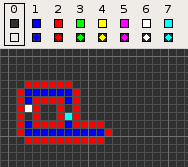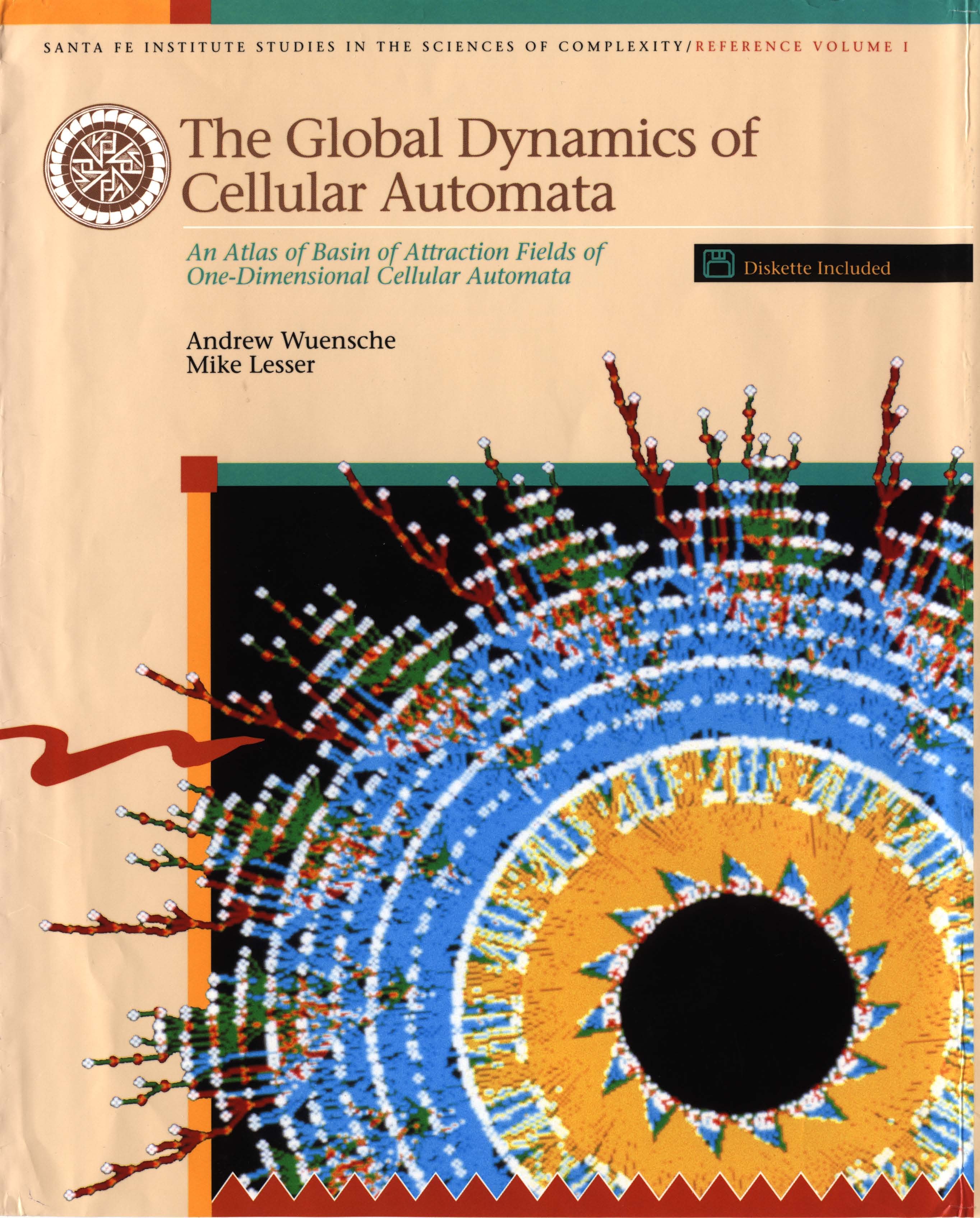Complex systems, artificial life in Bio-inspired computing. See Dynamical systems on networks, Discrete dynamical systems
Classsification of Cellular Automata
Computer simulations of cellular automata
Statistical mechanics of cellular automata
Equivalence of Cellular Automata to Ising Models and Directed Percolation
Phase Transitions of Cellular Automata See Directed percolation
Statistical Mechanics of Probabilistic Cellular Automata
Universality in Elementary Cellular Automata proves a conjecture made by Stephen Wolfram in 1985, that an elementary one dimensional cellular automaton known as “Rule 110” is capable of universal computation, i.e. it is a Turing machine (see Theory of computation)
Statistical mechanics of cellular automata
Computation theory of cellular automata
A new kind of science - Stephen Wolfram
http://www.paradise.caltech.edu/~cook/papers/index.html
Game of Life Cellular Automata
Elementary cellular automaton (wiki)


Examples
Von Neumann cellular automata are the original expression of cellular automata, the development of which were prompted by suggestions made to John von Neumann by his close friend and fellow mathematician Stanislaw Ulam. Their original purpose was to provide insight into the logical requirements for machine self-replication and were used in von Neumann's universal constructor.

Codd's cellular automaton designed to recreate the computation- and construction-universality of von Neumann's CA but with fewer states: 8 instead of 29.


Langton's loops consist of a loop of cells containing genetic information, which flows continuously around the loop and out along an "arm" (or pseudopod), which will become the daughter loop

Nobili cellular automata are a variation of von Neumann cellular automata (vNCA), in which additional states provide means of memory and the interference-free crossing of signal.





See also Discrete dynamical systems

http://out.coy.cat/?n=1001010010
http://out.coy.cat/?n=nicememe
http://out.coy.cat/?n=cate wooow sierpinski
http://out.coy.cat/?n=doitforthelulz
http://cellularautomata.coy.cat/
http://out.coy.cat/?n=1269489990&s=0
http://out.coy.cat/?n=1269489997&s=0
http://out.coy.cat/?n=1269490006&s=0
http://out.coy.cat/?n=1269490035&s=0
http://out.coy.cat/?n=1269490071&s=0
like the matrix: http://out.coy.cat/rndpat.php?n=1269490075&s=0
http://out.coy.cat/?n=1269490127&s=0
http://psoup.math.wisc.edu/mcell/ca_gallery.html
http://www.sciencedirect.com/science/article/pii/S0304397515005344